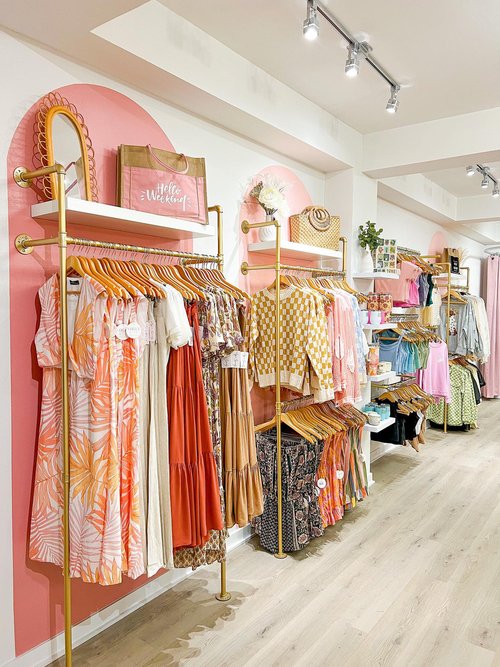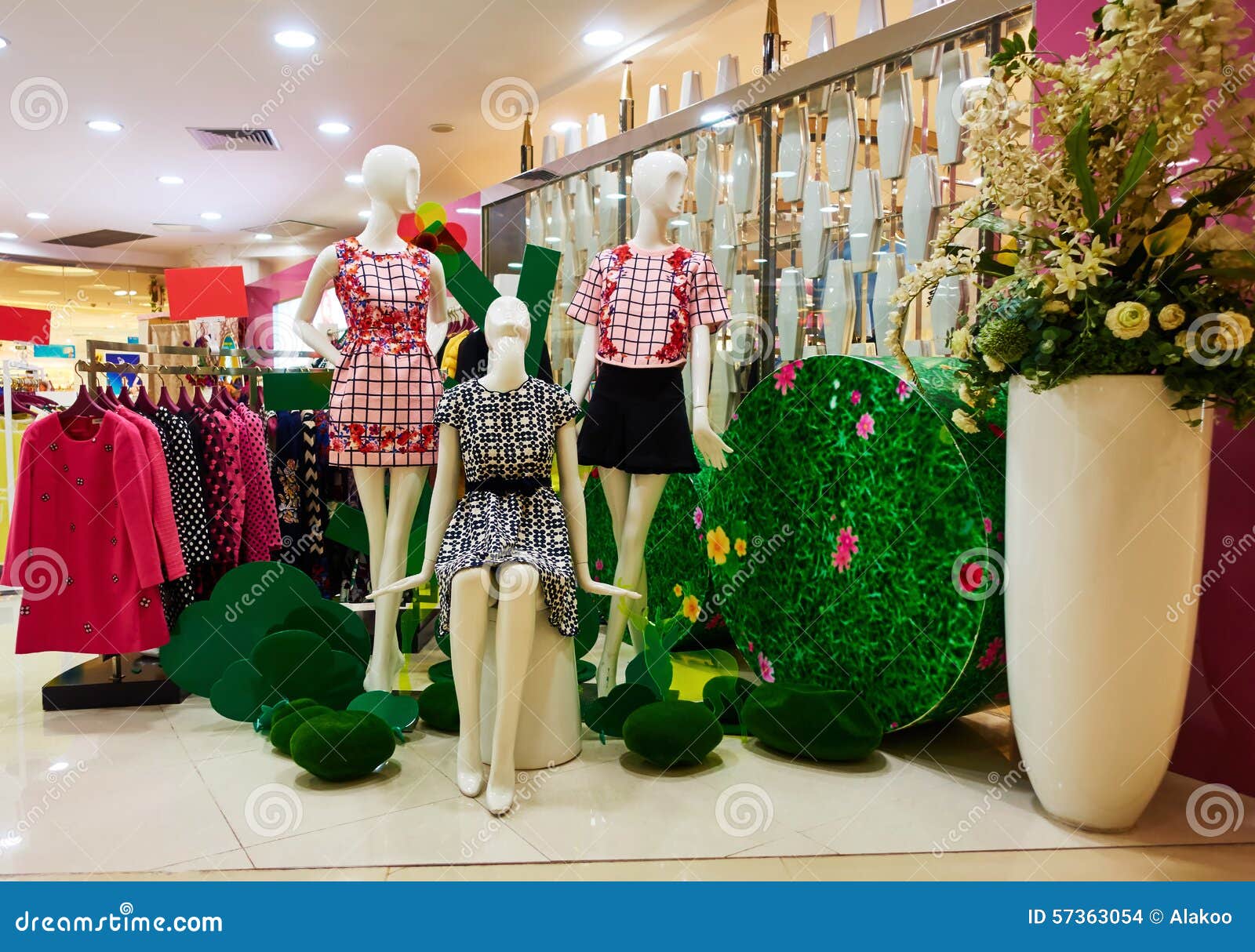The Influence of Social Media on Today's Boutique Fashion Trends
The Influence of Social Media on Today's Boutique Fashion Trends
Blog Article
Checking Out the Advancement and Impact of Clothing on Modern Style Trends
The development of garments has actually substantially affected contemporary fashion trends, merging historic precedents with cutting-edge innovations. Iconic figures like Coco Chanel and Yves Saint Laurent changed the fashion industry by presenting principles that focus on convenience and availability, which proceed to resonate today.
Historical Style Influencers
In the tapestry of style background, certain figures have left an indelible mark, shaping the patterns and styles that specify whole eras. Coco Chanel, an advanced developer, redefined females's fashion by presenting comfortable, sophisticated clothing that left from restrictive bodices.
Elsa Schiaparelli is an additional crucial number, renowned for her avant-garde designs that included surrealist art, working together with Salvador Dalí to develop wayward items that tested conventional appearances. Her cutting-edge usage of color and bold patterns reverberates in contemporary fashion. Yves Saint Laurent, on the other hand, equalized high style with prêt-à-porter collections, bringing runway styles to the masses and establishing a criterion for modern ready-to-wear lines.
These dreamers, among others, not just transformed style in their times however additionally set withstanding fads that resonate in today's garment industry, giving a structure upon which modern developers remain to innovate and develop. Their legacies highlight the importance of creative thinking and bold in vogue's ever-evolving story.
Technical Innovations in Style
Amidst the dynamic landscape of the apparel industry, technological developments stand at the leading edge of innovation, improving exactly how designers develop and customers involve with style. The combination of 3D printing has actually revolutionized design processes, making it possible for developers to trying out complex frameworks and lasting products that were formerly inconceivable. This innovation facilitates fast prototyping, decreasing waste and speeding up manufacturing times.

Smart textiles, installing technology into fabrics, are likewise changing the industry. Technologies like self-cleaning and temperature-regulating materials offer improved performance and comfort. Wearable modern technology, including attributes like physical fitness tracking and interaction, adds a brand-new measurement to fashion, merging appearances with functionality.
Social Shifts and Design
As technological advancements continue to improve the garment industry, social shifts are equally prominent, redefining design and consumer preferences. In recent times, the rise of social networks platforms has accelerated the dissemination of worldwide fashion fads, allowing varied social impacts to exist together and assemble. This digital interconnectivity has actually helped with the quick exchange of ideas, causing an extra eclectic and inclusive analysis of style that mirrors the diverse nature of contemporary culture.
Cultural understanding and admiration have prompted developers to draw inspiration from a wider range of historic and ethnic contexts, integrating standard motifs with modern looks. This fusion has resulted in fashion that resonates with a bigger audience, advertising a sense of identification and belonging across different demographics. Furthermore, the enhancing need for personalization has driven brands to supply adjustable choices, allowing customers to reveal individuality while reflecting their social heritage.
Moreover, changing social values have actually impacted fashion, with inclusivity and variety ending up being central themes. The sector has begun to embrace models and influencers of different physique, ethnicities, and sex identifications, challenging standard appeal criteria. This change emphasizes the power of cultural changes fit the future of fashion, as style ends up being a much more genuine expression of personal and cumulative identification.
Sustainability and Modern Style
While the fashion business continues to evolve, the critical for sustainability has come to be increasingly urgent, affecting contemporary style techniques. This shift aims to resolve environmental issues and ethical considerations, bring about a reevaluation of typical production techniques. Designers are now incorporating lasting products, such as natural cotton, recycled polyester, and naturally degradable materials, into their top article collections, decreasing the ecological impact of style. The increase of sluggish fashion, which highlights top quality over quantity, encourages consumers to buy classic items as opposed to transient trends.
In addition, contemporary style is characterized by its advancement in reducing waste and advertising circularity. Methods such as zero-waste pattern cutting and 3D knitting are gaining traction, enabling developers to develop garments with marginal textile wastage. In addition, brand names are adopting transparent supply chains, making sure accountability and promoting consumer trust fund. This approach not just minimizes environmental effect however also boosts the social duty of style homes.

Future Trends in vogue

Sustainability will certainly proceed to be a driving pressure in shaping future fashion fads. The try this web-site sector is significantly embracing green products and honest manufacturing methods, reacting to an expanding customer demand for responsible methods. Innovations such as bio-fabricated products and closed-loop recycling systems are established to redefine just how clothes is generated and taken in, minimizing environmental impact while maintaining style and quality.
Social changes, including the rise of inclusivity and diversity, will certainly likewise play a pivotal function. As culture comes to be much more knowledgeable about social issues, style is expected to end up being a platform for expression and adjustment. Designers will likely concentrate on producing collections that show a wider series of experiences and identities, promoting representation and accessibility.
Final Thought
The advancement of apparel significantly you can try here impacts contemporary style fads, where historic influences merge with contemporary designs. Secret numbers like Coco Chanel and Yves Saint Laurent have actually redefined design, while technological advancements such as 3D printing and smart textiles expand imaginative opportunities. Cultural changes towards inclusivity and sustainability force brand names to take on ethical methods and embrace diversity. This ongoing advancement underscores fashion's duty as a mirror to societal worths and technical advancement, suggesting a future abundant with advancement and inclusivity.
The advancement of apparel has substantially influenced contemporary fashion fads, combining historical precedents with sophisticated technologies.Amidst the dynamic landscape of the style sector, technological improvements stand at the center of advancement, improving just how designers develop and consumers involve with style.While the style industry continues to advance, the critical for sustainability has actually become increasingly urgent, affecting modern layout methods. As sustainability ends up being embedded in contemporary design, it leads the method for a more accountable and conscious fashion sector.
The evolution of clothing dramatically influences contemporary fashion trends, where historical influences merge with modern layouts.
Report this page